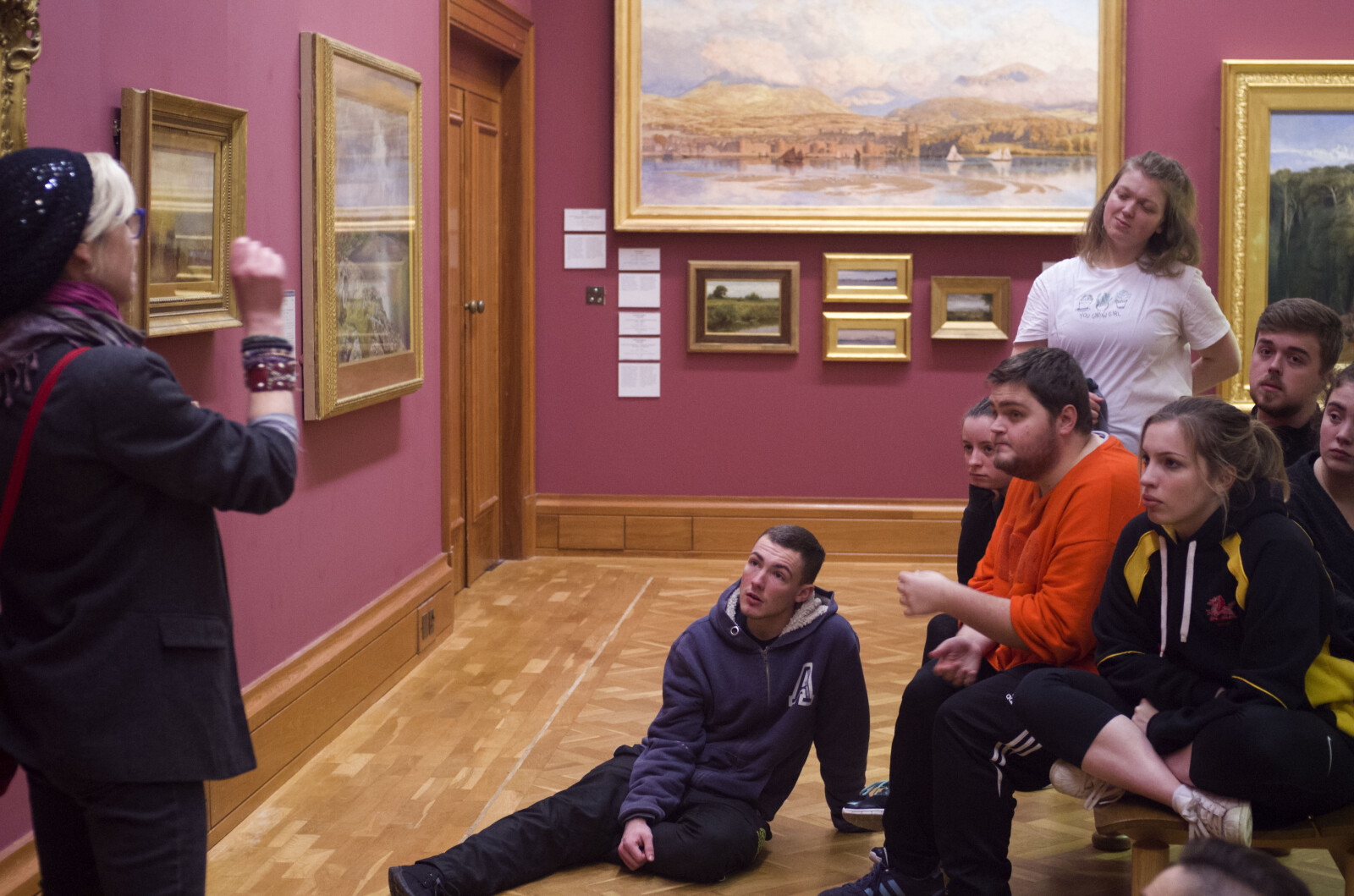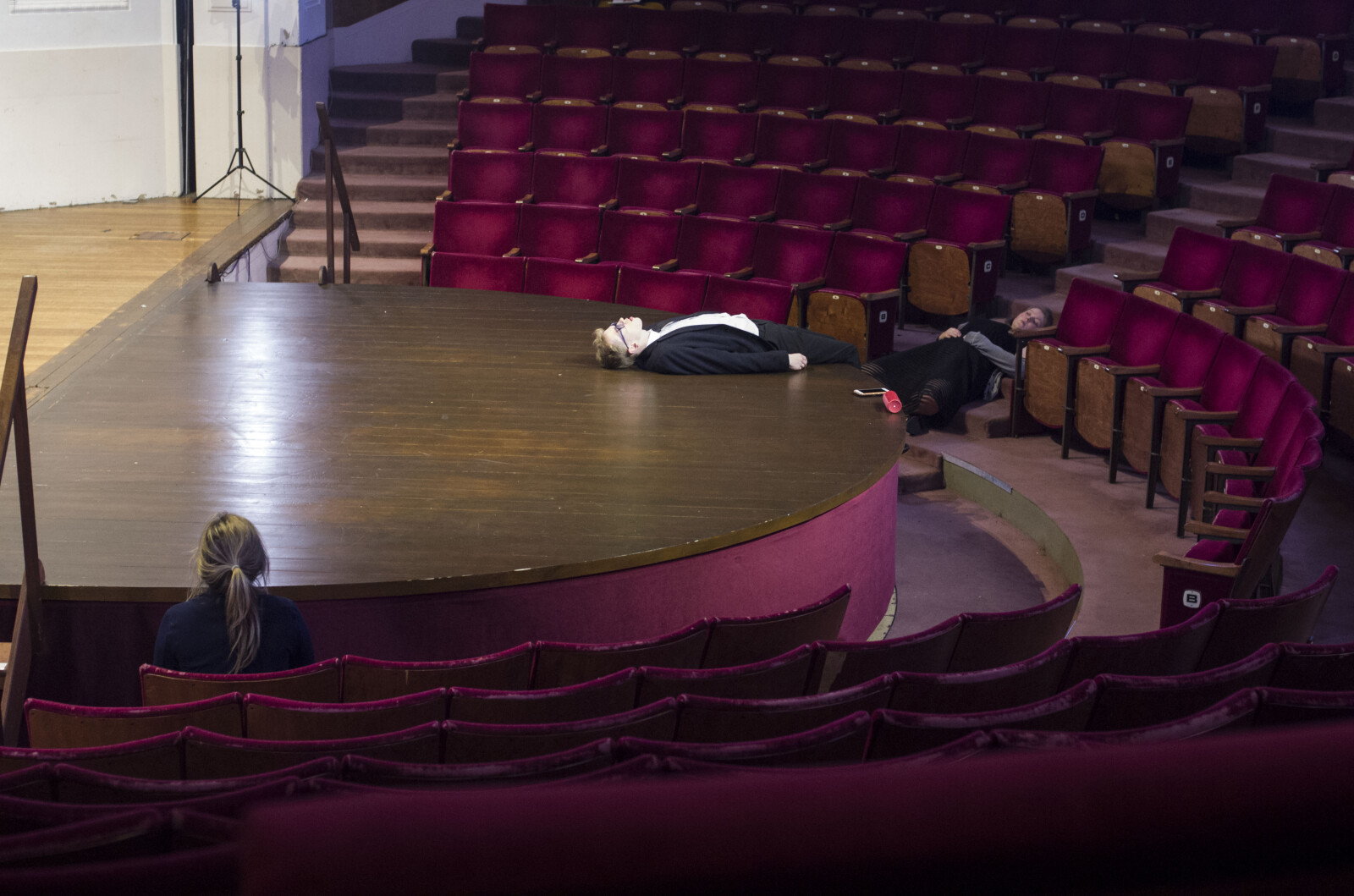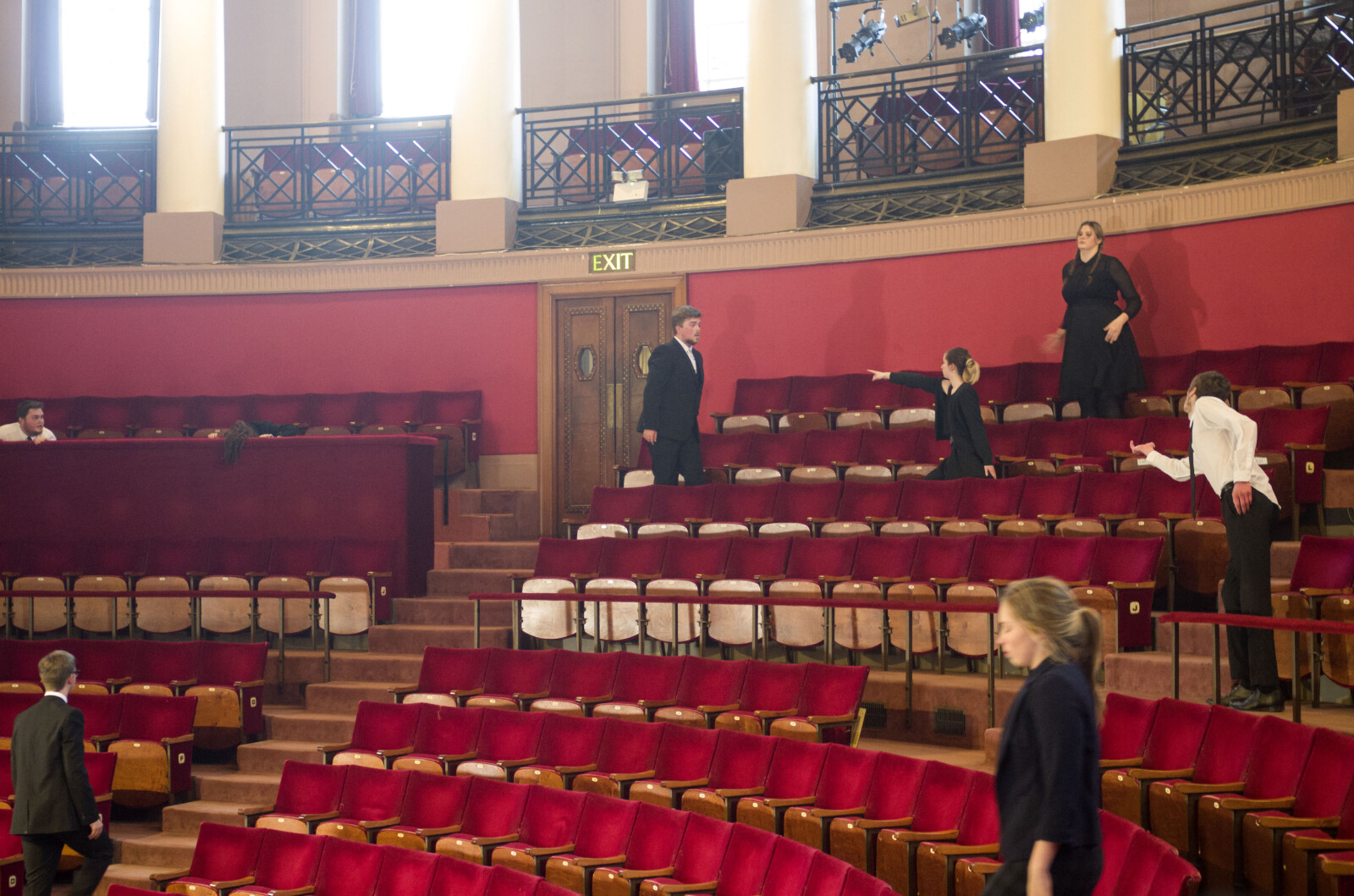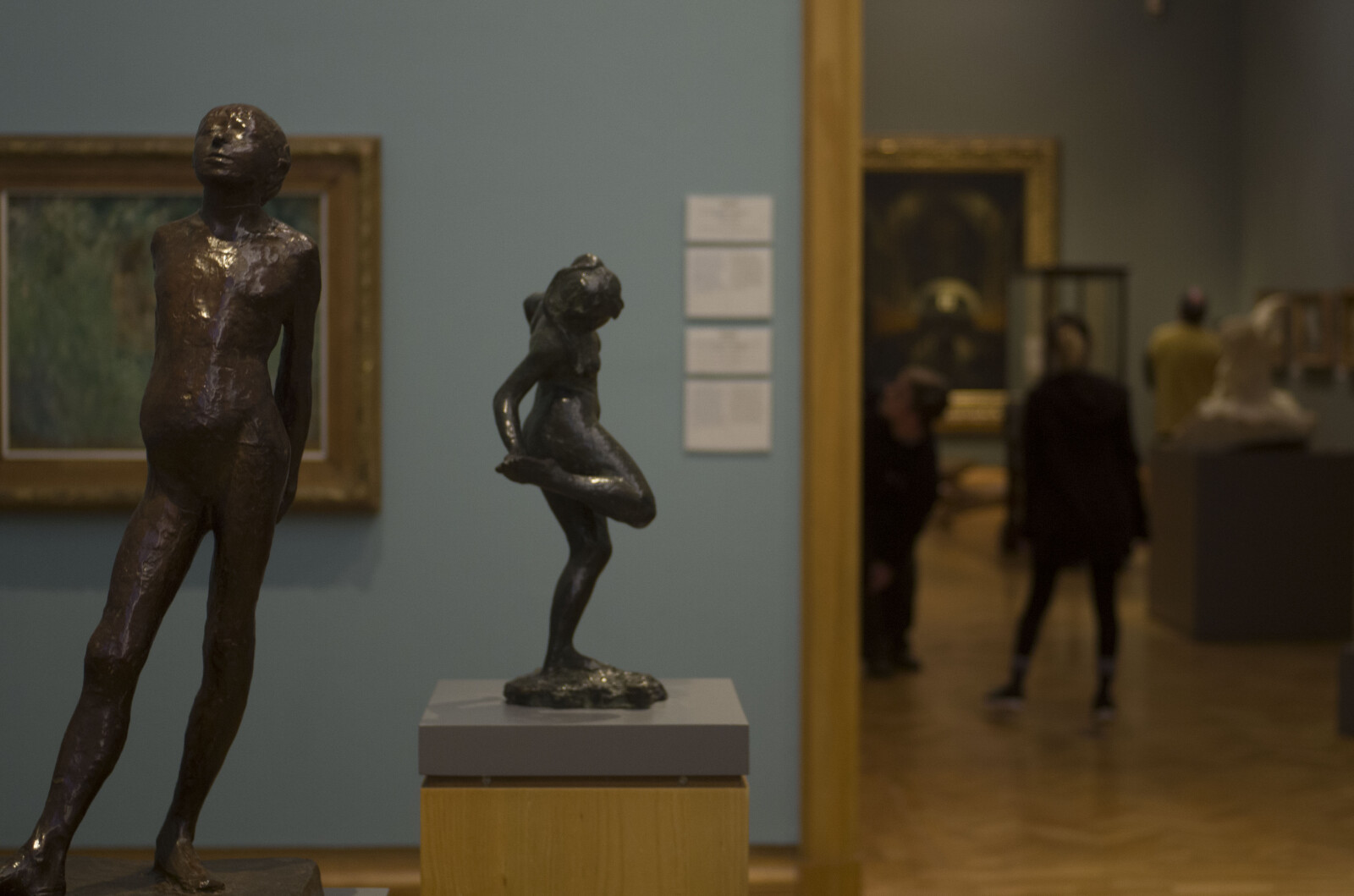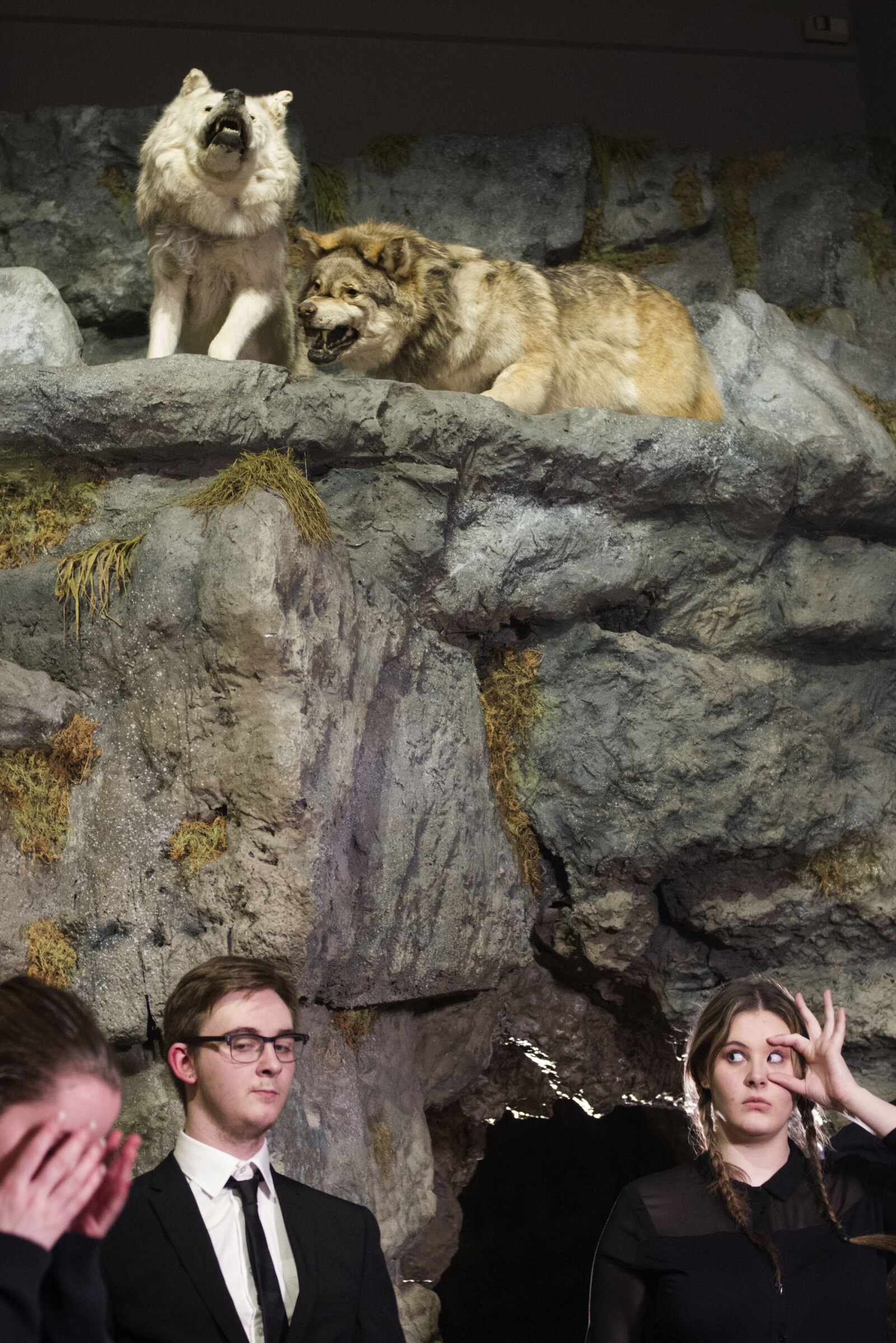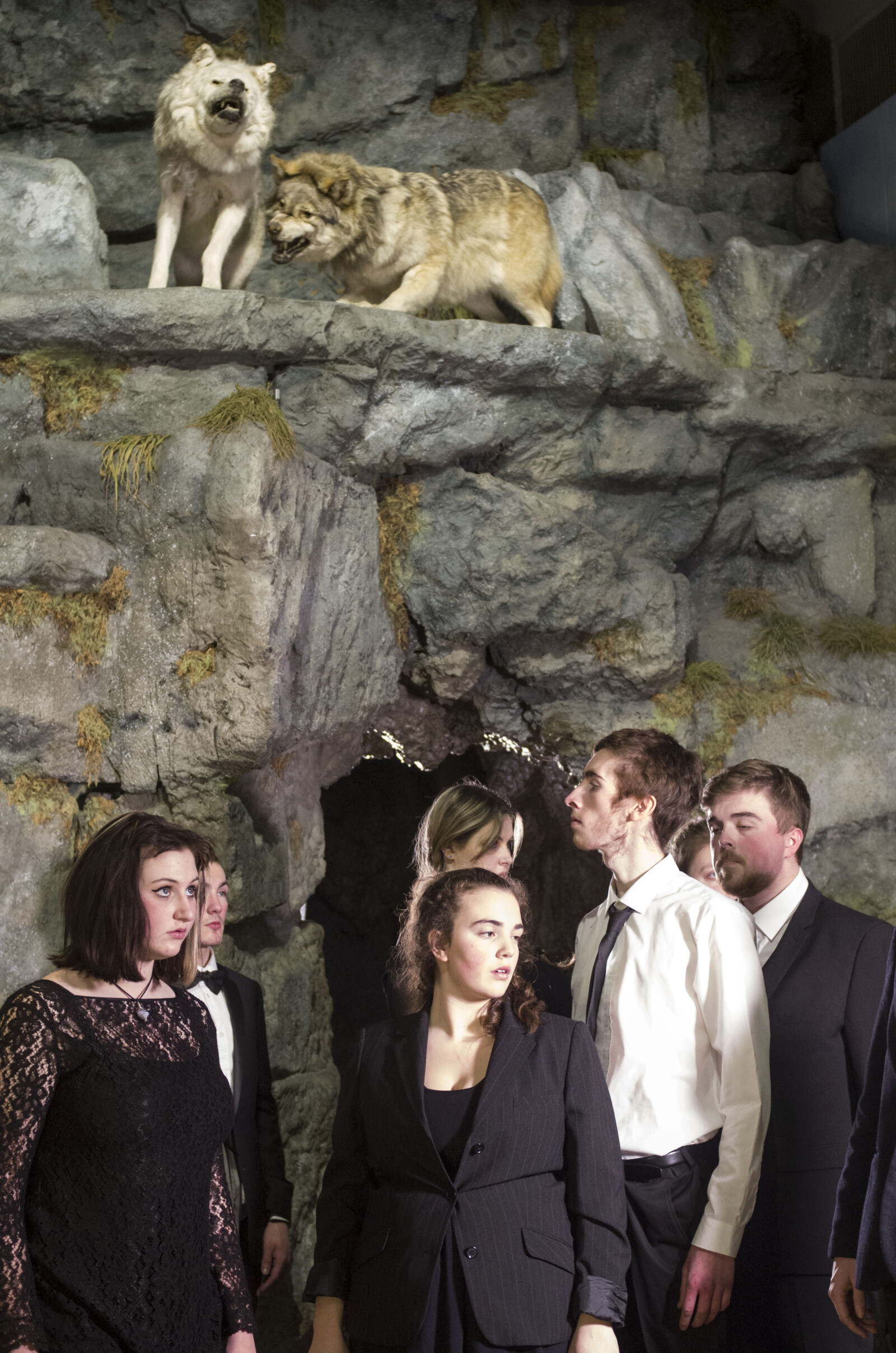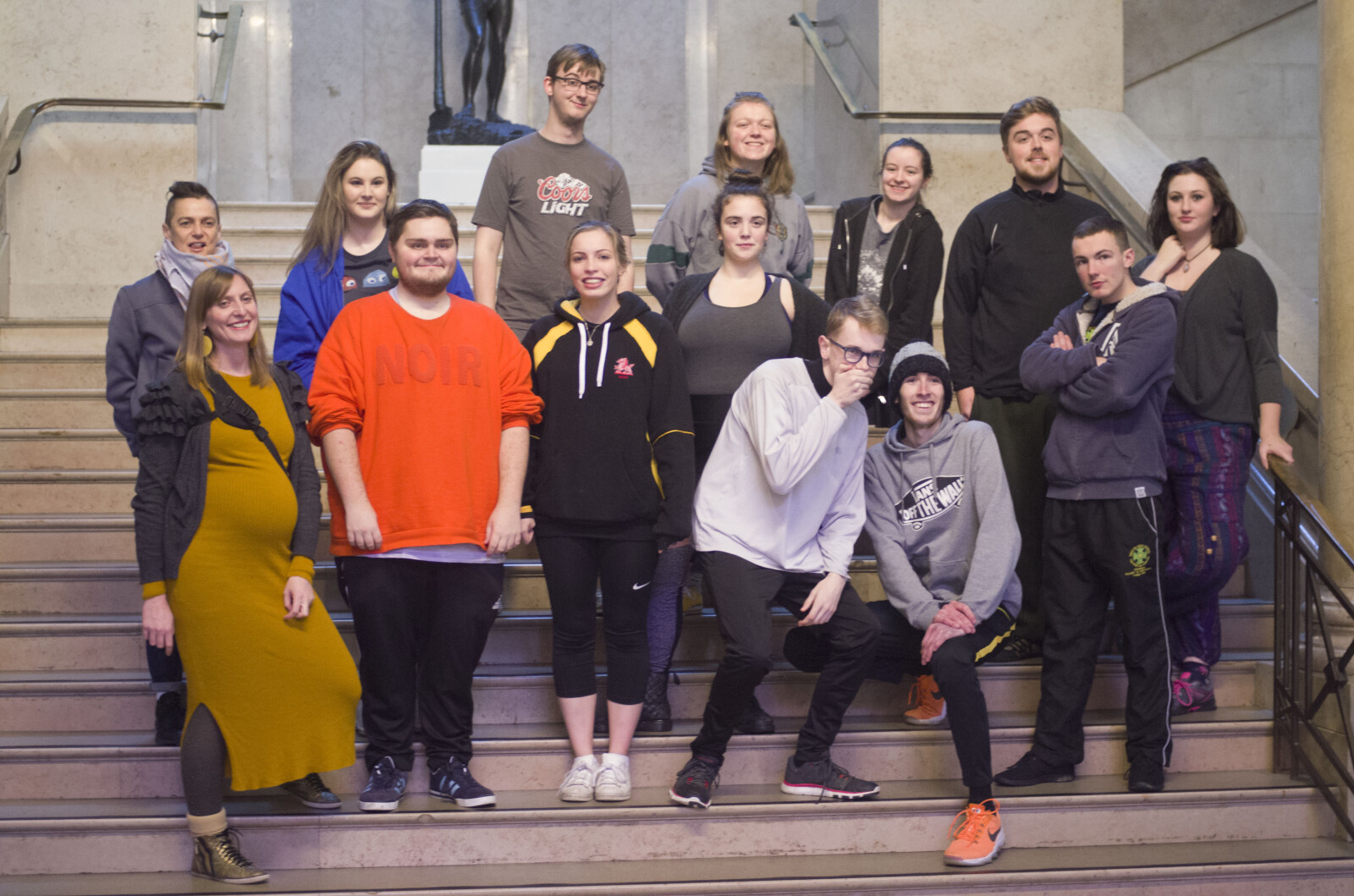Kick the Dust - dance at the museum
, 19 December 2017
Monday, 11th December, the National Museum Cardiff in Cathays hosted the first pilot activity of ‘Kick the Dust’, a Heritage Lottery funded youth and community engagement programme aiming to to work with 14-24 year olds and use the National Museums of Wales as tool boxes to provide fun, engagement, career and life-skills development opportunities. The first people to utilise the museums’ space was a group of twelve students in their second year of the BA Theatre and Performance course at Aberystwyth University. This was an opportunity for them the try out and experiment with performance techniques and styles studied in a module over the last ten weeks.
After a three-hour journey through snowy Wales, the students arrived and were taken on a tour; they were invited to examine and be inspired by the textures, architecture, sculptures and paintings within the building and the students developed physical responses to their chosen areas of interest. Initially, the museum felt like a loaded space to the students, they were unsure of the rules of engagement to begin with. However, through the course of the day, the students stretched out and embraced the museum; the performers worked the dormant surroundings and brought the halls of memory to life.
Performances were filmed and photographed in four locations within the museum; an empty exhibit space, the theatre, the gallery space containing the painting ‘Choir of the Capuchin Church’ 1817 by François Marius Granet, and a taxidermy section of the natural history exhibition. These diverse spaces yielded equally diverse results. The first space, the empty exhibition, they found to be eerie and neutral so they used it to workshop and play with the concepts of a previous performance. The students engaged with this area for at least fifteen minutes of focussed and intense work which was fascinating to witness. The next space was the theatre and here the students felt at home and they really began to thrive. In the ten minutes of their performance here, they engaged with the architecture and sharp lines of the auditorium as well as the performer-audience relationship; this piece blurred the lines between the expected, smashing the fourth wall and replacing it with an osmotic veil which helped me, as an observer, reinterpret the space and the emotional journeys taken within it.
The next, more traditional museum-gallery location was enchanting to witness. The group were inspired by the depth and angles within the painting and decided to use a doorway between two gallery spaces as the ‘frame’ to their interpretive performance; they explored the role of the spectator observing the artwork, the shapes and emotion within the pieces themselves, and the angles and imposition of the cases and stands. It became an active, rhythmic representation of the feeling and themes present in the room within the framed-depth concept. I found myself observing their fluid development of the space as I would a static piece of art, finding new areas of detail and interpretation the longer you look. The last performance in the taxidermy exhibition was an intense one. They explored the processes involved in preparing taxidermy through physical gesture re-enactment and, in the confined space overlooked by wolves, skeletons and a bison, it became quite claustrophobic and uncomfortable; they captured the unnaturalness of the grotesque process.
At 5pm, the students finally got on the coach back to Aberystwyth, still excited and proud of the amazing work they’d done at the museum. They had indeed managed to ‘Kick the Dust’.
This blog post was written by Christina Dixon, a BA history student volunteering and getting work experience at Amgueddfa Cymru-National Museum Wales.

